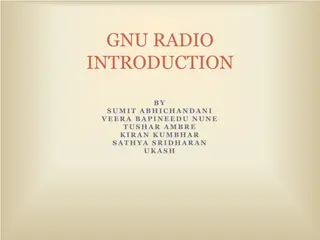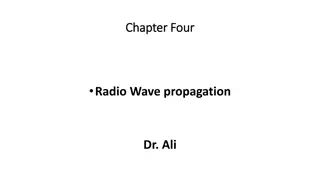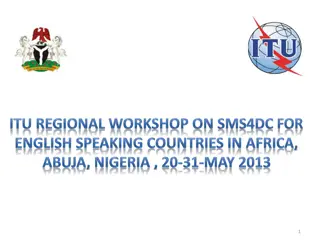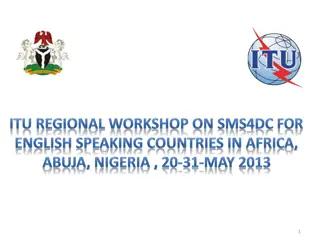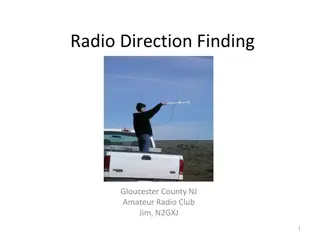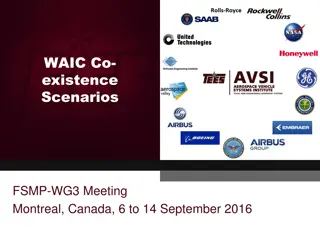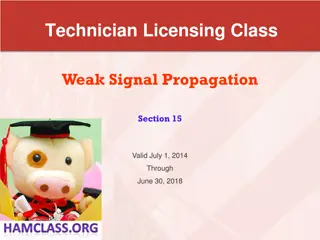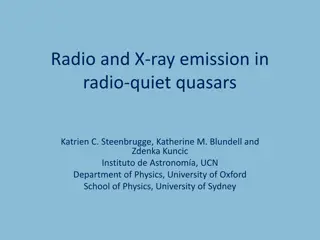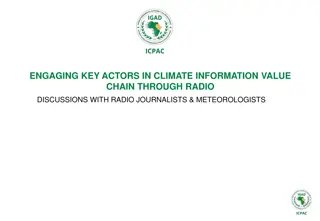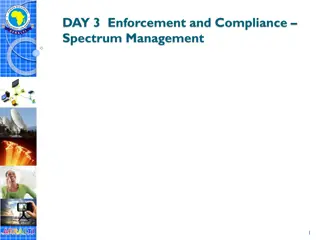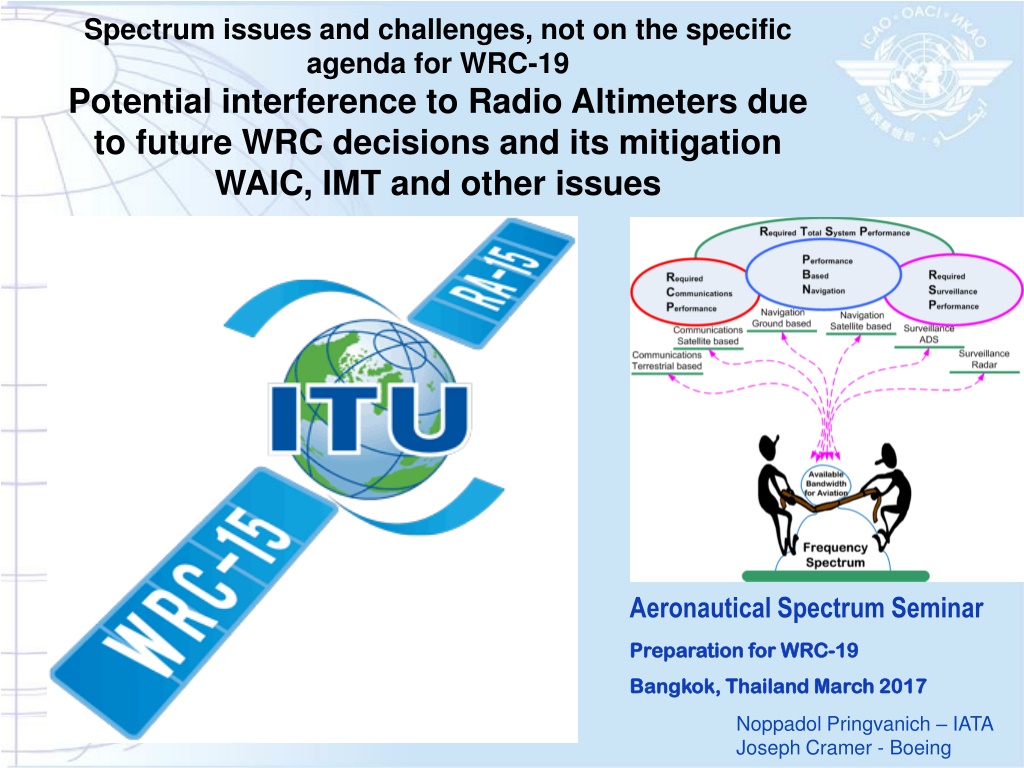
Addressing Potential Interference to Radio Altimeters and WAIC at WRC-19
Learn about the spectrum issues affecting radio altimeters, the coexistence challenges with Wireless Avionics Intra-Communications (WAIC), and ongoing efforts to mitigate interference risks. Stay informed on the crucial importance of radio altimeters in aircraft operations.
Download Presentation

Please find below an Image/Link to download the presentation.
The content on the website is provided AS IS for your information and personal use only. It may not be sold, licensed, or shared on other websites without obtaining consent from the author. Download presentation by click this link. If you encounter any issues during the download, it is possible that the publisher has removed the file from their server.
E N D
Presentation Transcript
Spectrum issues and challenges, not on the specific agenda for WRC-19 Potential interference to Radio Altimeters due to future WRC decisions and its mitigation WAIC, IMT and other issues http://www.itu.int/ITU-R/conferences/images/wrc-2015-logo-h350.png Aeronautical Spectrum Seminar Preparation Preparation for for WRC WRC- -19 19 Bangkok, Thailand March 2017 Bangkok, Thailand March 2017 Noppadol Pringvanich IATA Joseph Cramer - Boeing
Overview Overview Potential Interference to Radio Altimeters due to future WRC decisions and its mitigation Wireless Avionics Intra-Communications (WAIC) Coexistence with Radio Altimeters International Mobile Telecommunication (IMT)
Importance of the Radio Importance of the Radio Altimeter Altimeter Essential component of an aircraft for precision approach, landing, ground proximity and collision avoidance. Safety critical to pilot and flight operations Being used in all phases of flight Provides accurate height measurements over many types of surface (forest, water, buildings, flat). This information is used by: Automatic flight control system; ground proximity warning system; terrain awareness and warning system; flight management guidance computer; flight control system; electronic centralized aircraft monitoring system; and engine-indicating and crew- alerting system. Two types: Frequency Modulated Continuous Wave and Pulsed Modulation. Typical usage is -6 meters up to 6000 meters. Up to three are installed on a single commercial aircraft.
WAIC Coexistence with Radio WAIC Coexistence with Radio Altimeters Altimeters As a result of WRC-15, Wireless Avionics Intra-Communications (WAIC) share the radio frequency band 4200-4400 MHz with radio altimeters. The new allocation is: 2 700-4 800MHz Allocation to services Region1 Region2 Region3 4 200-4 400 AERONAUTICAL MOBILE (R) ADD 5.A117 AERONAUTICAL RADIONAVIGATION MOD 5.438 5.439 5.440 ADD 5.B117 The Aeronautical Mobile (R) service is limited to WAIC systems. The Aeronautical Radionavigation service is limited to radio altimeters. While aviation interests had the intention of prioritizing radio altimeters over WAIC systems, such language was opposed at the WRC. Aviation s intent remains the same.
WAIC Coexistence with Radio WAIC Coexistence with Radio Altimeters Altimeters Efforts are currently underway to safely incorporate WAIC onto aircraft. Minimum Operational Performance Standards (MOPS) are being developed by RTCA (SC-236) and EUROCAE (WG-96). EUROCAE exchanging information between WG-72 (Data security) and WG-99/SC-234 (PEDS). Discussions with WG-68 ( Altimetry ) as well. Standards and Recommended Practices (SARPS) are being developed within the FSMP Working Group.
International Mobile International Mobile Telecommunication (IMT) Telecommunication (IMT) IMT applications are increasing very rapidly. More frequency allocations and identifications are required to support this expansion. During WRC-2015, the IMT industry through some States requested frequency identification at 4 400 4 500 MHz for IMT applications. This frequency band is adjacent to the frequency band for radio altimeter. Some States support this request of the IMT industry. However, no ITU regional groups support such proposal. Concerns were raised due to the lack of satisfactory adjacent-band compatibility test.
IMT IMT Due to the safety criticality of the aircraft radio altimeters, several States aviation regulators and airlines were directly requested to assist with lobbying with their Capitals during the WRC-2015. Competition between IMT and aviation for limited frequency resources Debates lasted until the last day of the WRC-2015. The IMT proposal was eventually dropped due to collaborative efforts by ICAO, IATA, ITU regional groups, aviation stakeholders and States themselves.
IMT IMT Lesson Learned: Preparation for WRCs is a global aviation effort. This was a close call. Doing nothing is not an option. This type of IMT request can come back again in 2023. Early coordination and communication among State authorities (aviation and telecommunication) are essential in forming and influencing States positions for WRCs. A clear technical definition for adjacent-band interference rejection should be developed under ICAO for radio altimeters and some other safety critical equipment.
IMT IMT What are being done? ICAO Frequency Spectrum Management Panel (FSMP) is defining an interference rejection criteria for radio altimeters to be included in future ICAO SARPs. Joint effort with the development of SARPs for WAIC. An industry-wide consultation will be needed noting many radio altimeters are already installed and being operated on aircraft. Continue global aviation efforts to protect this safety-critical equipment and the safety of traveling publics Your assistance is needed and is highly appreciated.

